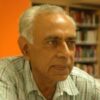Studying Physical Structures of Human Body
TRANSCEND MEMBERS, 26 Aug 2024
Dr. Ravi P. Bhatia – TRANSCEND Media Service
There are different types of persons with differing bodily characteristics that are found in the world. These persons have a broad sameness in terms of their physical structures — face, legs, arms, hands, feet , ears and other parts . By this I mean that people have two legs with two feet, two arms with two hands with each hand having one thumb and four fingers. Each foot also has five fingers with one longish finger that acts like a thumb.
It is interesting to see a human baby transforming from the body of a child to that of an adult, as the child grows. The face of the child is full of different aspects and for expressing different emotions. The face has two eyes for seeing, one nose for breathing, two ears for listening to words or sounds and the mouth that has two aspects — for eating and speaking .
The child eats with his mouth that has varying number of teeth as he grows with age. In the beginning the child has no teeth but gradually teeth start appearing in the child’s mouth that allows him to eat differing food items.
The mouth is used for eating or drinking and speaking or uttering any sound. I will dwell on the mouth’s ability later in my essay.
One main difference between people is the gender difference — male (men) and female (women). Sexual interaction between men and women results in the woman becoming pregnant — she carries a small baby foetus in her womb for about nine months after which the fully formed baby is expelled from the woman’s body . But the woman — we can call her mother now, looks after the baby in all respects. The mother is able to feed her baby with breast milk and looks after the different needs of the baby . She also talks to the baby in simple language so that the baby also is able to understand and speak simple words .
The mother breast feeds milk to small children but gradually as the child grows, he needs supplementary nutrition in terms of different food items such as vegetables, rice, dal, juice etc. Of course several families also eat non vegetarian food — fish and meat etc.
Although the above features of human beings are common, there are some main differences in terms of colour and heights or sizes of the individuals.
Europeans and people of Kashmir generally are white skinned but most people of southern states — Tamil Nadu, Kerala are dark skinned. Most people of eastern parts of Africa are also dark skinned and are tall with long legs that helps them to run fast in sports.
In India which is a very large country, we see both men and women with different physical aspects because of the diversity of body features . Some Indians are white skinned , some are tall, some have rather short heights. One can see individuals with different body features in terms of height, weight, colour, amount of hair etc.
Come to India and see people of various features and heights and colours — white and dark skinned, tall and short sized. Some have large amount of hair on their bodies but people of W. Bengal and neighbourhood have virtually no hair on their bodies except on their heads. There are of course different factors behind these bodily aspects which I am not referring to in this article.
As indicated and as we all know, a mouth is used for eating as well as also for speaking. If we eat properly with sufficient food and water, we tend to be affectionate and speak gently and lovingly. On the other hand, if we don’t get sufficient food and water we speak bitterly and with criticism.
No wonder that many Indian leaders complain that it is difficult to oversee and rule India properly.
______________________________________________
 Dr Ravi P Bhatia is a member of the TRANSCEND Network for Peace Development Environment, an educationist, Gandhian scholar and peace researcher. Retired professor, Delhi University. His new book, A Garland of Ideas—Gandhian, Religious, Educational, Environmental was published recently in Delhi. ravipbhatia@gmail.com
Dr Ravi P Bhatia is a member of the TRANSCEND Network for Peace Development Environment, an educationist, Gandhian scholar and peace researcher. Retired professor, Delhi University. His new book, A Garland of Ideas—Gandhian, Religious, Educational, Environmental was published recently in Delhi. ravipbhatia@gmail.com
Tags: Human body, India, Race
This article originally appeared on Transcend Media Service (TMS) on 26 Aug 2024.
Anticopyright: Editorials and articles originated on TMS may be freely reprinted, disseminated, translated and used as background material, provided an acknowledgement and link to the source, TMS: Studying Physical Structures of Human Body, is included. Thank you.
If you enjoyed this article, please donate to TMS to join the growing list of TMS Supporters.

This work is licensed under a CC BY-NC 4.0 License.
One Response to “Studying Physical Structures of Human Body”
Join the discussion!
We welcome debate and dissent, but personal — ad hominem — attacks (on authors, other users or any individual), abuse and defamatory language will not be tolerated. Nor will we tolerate attempts to deliberately disrupt discussions. We aim to maintain an inviting space to focus on intelligent interactions and debates.
A very nice article about human body – similarities and dissimilarities written in fluid and smooth flowing style. It is always a pleasure read Dr. Bhatia’s simple, easy to understand and enjoyable articles.